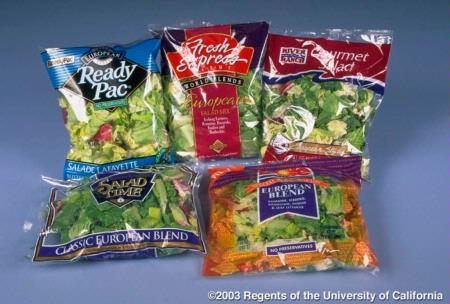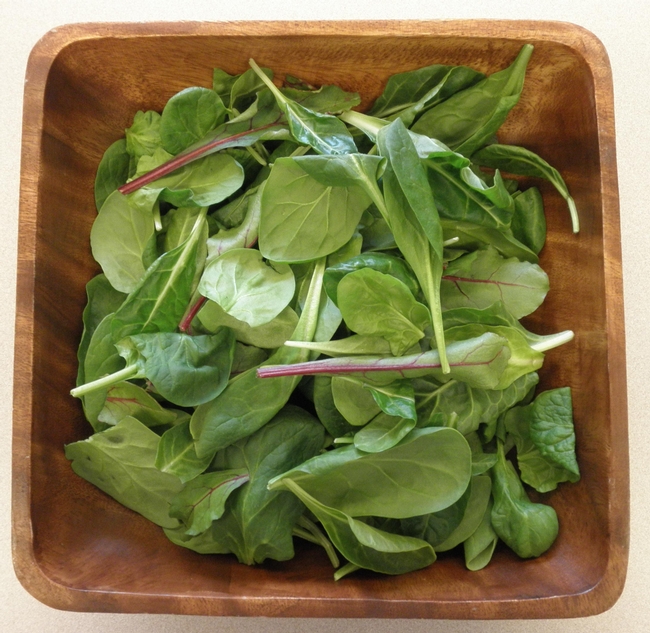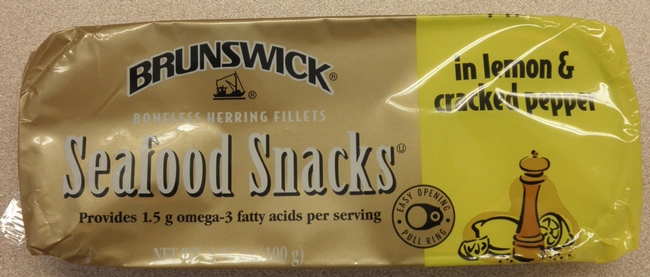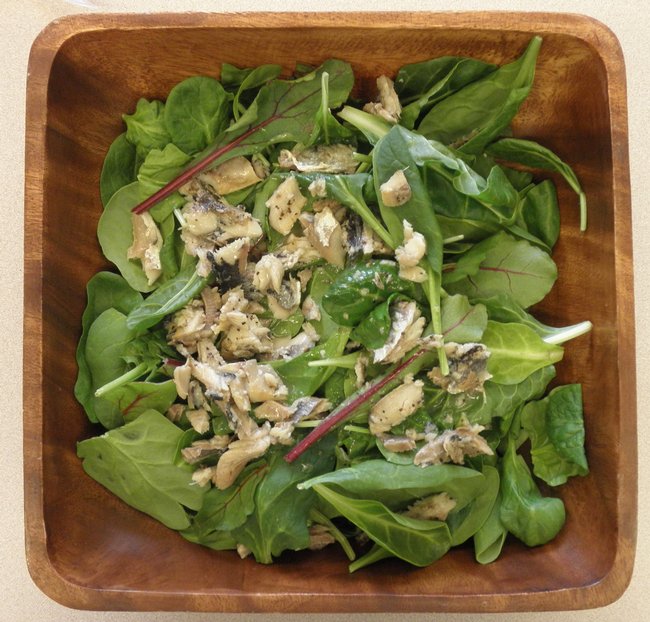Posts Tagged: leafy
A big bowl of dark leafy greens and ...
We all know that eating dark leafy greens is good for us, right? So that’s why for lunch lately I’ve been on a health kick to eat a big bowl of dark leafy greens topped with a lean protein source. I have, however, been subject to some good-natured ribbing around my office regarding my lunch selections. So I decided to research my lunch ingredients, and why I, as well as my inquisitive co-workers, already know it’s something of a power lunch, in the most nutritious of ways. First, the base of my lunch: a mix dark leafy greens (today it’s spinach, baby bok choy, and red and green chard).
The USDA describes the following general health benefits by eating your vegetables:
- Eating a diet rich in vegetables and fruits as part of an overall healthy diet may reduce risk for heart disease, including heart attack and stroke.
- Eating a diet rich in some vegetables and fruits as part of an overall healthy diet may protect against certain types of cancers.
- Diets rich in foods containing fiber, such as some vegetables and fruits, may reduce the risk of heart disease, obesity, and type 2 diabetes.
- Eating vegetables and fruits rich in potassium as part of an overall healthy diet may lower blood pressure, and may also reduce the risk of developing kidney stones and help to decrease bone loss.
- Eating foods such as vegetables that are lower in calories per cup instead of some other higher-calorie food may be useful in helping to lower calorie intake.
And specifically, dark leafy greens are nutrition-dense, with loads of vitamins (Vitamin K, C, E and B), minerals (iron, potassium, magnesium and calcium) and fiber. Additionally they contain beta-carotene, lutein and zeaxanthin, which aide in disease prevention.
Second, the toppings. I’ve left this part for the end, because those co-workers of mine thought you might not still be reading if I let you in on my super power lunch protein choice, so here it is: a can of herring.
Surprised? Yep, herring is really good (I already like herring, but I love the lemon pepper variety), and there’s no need to add dressing, just dump the whole can on your salad! Sardines, smoked oysters and tuna — all on the “Good alternative” or “Best Choice” list on the Monterey Bay Aquarium Seafood Watch — are also delicious. They’re also very convenient and relatively inexpensive, especially if you stock up when they’re on sale. Fish is a super-food of protein choices, evidenced by the USDA Dietary Guidelines for Americans 2010:
“Mean intake of seafood in the United States is approximately 3 1/2 ounces per week, and increased intake is recommended. Seafood contributes a range of nutrients, notably the omega-3 fatty acids, eicosapentaenoic acid (EPA) and docosahexaenoic acid (DHA). Moderate evidence shows that consumption of about 8 ounces per week of a variety of seafood, which provide an average consumption of 250 mg per day of EPA and DHA, is associated with reduced cardiac deaths among individuals with and without pre-existing cardiovascular disease.”
A recent USDA paper says fish consumption is especially beneficial to pregnant and lactating women: “increased maternal dietary intake of long chain omega-3 fatty acids, in particular DHA from at least two servings of seafood per week during pregnancy and lactation is associated with increased DHA levels in breast milk and improved infant health outcomes, such as visual acuity and cognitive development.” (See complete February 2012 article.) And, just as I was getting ready to submit my blog, an article entitled “Brainpower Tied to Omega-3 Levels” appeared in the NY Times. How’s that for timing!
All this is not to say that chicken breast, tofu or beans are to scoff at, but do you get your USDA-recommended two servings of fish a week? What about that recommended two servings of chicken breast? Or tofu? Even beans don’t get a mention of how many times a week you should eat them. And for this I get razzed by my co-workers. Hmmph—bon appetite!
Research helps ensure safety of leafy greens
Four years ago, a multi-state outbreak of E. coli O157:H7 in fresh baby spinach gripped the nation. Nearly 200 people in 26 states came down with the disease. Two elderly women and a 2-year-old boy died.
The outbreak was also devastating for the industry. The contaminated spinach was traced back to Central California, where growers produce 80 percent of the nation’s leafy greens. Scientists, farmers and regulators worked together to restore public confidence in products that are widely considered part of a healthy diet. Regulators and farmers created the California Leafy Green Marketing Agreement to establish a culture of food safety on leafy greens farms and researchers worked to close gaps in the body of scientific knowledge about the sources of E. coli O157:H7 in the region.
In 2006, UC and USDA researchers were already designing a four-year study of the possible sources of E. coli O157:H7 near Central California fresh produce fields when the high-profile spinach outbreak occurred. This month, data collection from rangeland and farmland, steams and irrigation canals comes to a close. The team of scientists is now analyzing the data to reach conclusions that will help prevent future food contamination.
Preliminary results reflect a diversity of E. coli O157:H7 carriers near Central Coast farms, according to Edward (Rob) Atwill, a UC Davis School of Veterinary Medicine specialist in waterborne infectious diseases and co-principal investigator of the study. Early on, free-ranging feral swine were implicated as carriers of the deadly bacteria, but it wasn’t known whether there were other sources in the environment. The researchers collected 1,233 samples of wild and feral animal scat from 38 Central Coast cattle ranches and leafy greens farms that were adjacent to riparian, annual grassland and oak woodland habitat. Eighteen of the samples were found to contain E. coli O157:H7.
The scientists found the bacteria in
- 3 of 60 brown-headed cowbirds
- 5 of 93 American crows
- 2 of 95 coyotes
- 1 of 72 deer mice
- 10 of 200 feral swine
E. coli O157:H7 was not found in scat samples from deer, opossums, raccoons, skunks, ground squirrels, or other bird and mouse species.
“Our goal over the next nine months is to finish analyzing this very large and comprehensive dataset and to identify various good agricultural practices that reduce the risk of foodborne pathogens for the produce industry,” Atwill said.

Research helps prevent contamination of fresh leafy greens.
The science behind salad safety
Nutritionists recommend eating a cup of leafy green vegetables every day, but recent reports about the safety of fresh greens may have some wondering whether it could do more harm than good. Consumers Union, the publishers of Consumer Reports magazine, analyzed store-bought prewashed and packaged leafy greens and published the results in the March 2010 issue.
Currently, the FDA has no set guidelines for the presence of bacteria in leafy greens. Consumers Report said several industry consultants suggest that an unacceptable level would be 10,000 or more colony forming units per gram. The Consumers Report study found that 39 percent of their 208 samples purchased last summer in Connecticut, New Jersey, and New York exceeded this level for total coliform, and 23 percent for Enterococcus."Although these 'indicator' bacteria generally do not make healthy people sick, the tests show not enough is being done to assure the safety or cleanliness of leafy greens," said Dr. Michael Hansen, senior scientist at Consumers Union, the nonprofit publisher of Consumer Reports.
UC Davis Cooperative Extension specialist Trevor Suslow wrote a lengthy and detailed reaction to the study for Farm Safety News. He said it is unfair to consumers to raise a specter of fear well beyond what is supported by available science and our everyday shared experiences."What I rely on for my personal confidence in regularly consuming lettuces, spring mix, and spinach salads is that there are billions and billions of servings of these items consumed every year in the U.S. alone and the predominant experience we have is of safe consumption," Suslow wrote.
Suslow offered these common sense guidelines for purchasing and eating leafy greens:
- Check the display temperature by hand to confirm the display is cool and the bags are very cool to the touch.
- Look at and heed the "Best if Consumed By" date.
- Take notice of the display case arrangement. Bags should be vertical in a row, not laid one on top of one another in stacks. Clamshell containers can displayed in various stacking or slanted row patterns that allow generous space for airflow.
- Prewashed greens do not need to be rewashed at home. In fact, studies have found that home washing doesn't provide any benefit and could make the vegetables susceptible to cross-contamination in the kitchen.

Packaged leafy greens.




